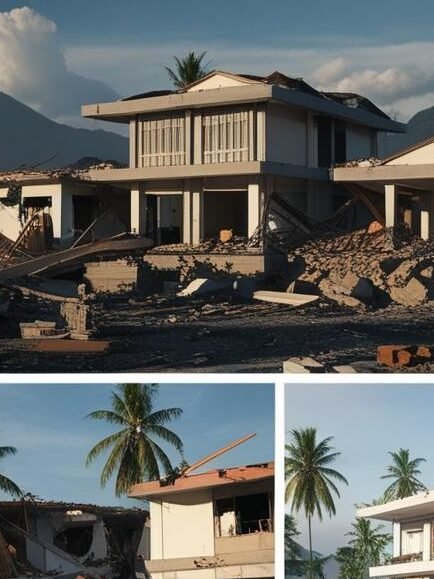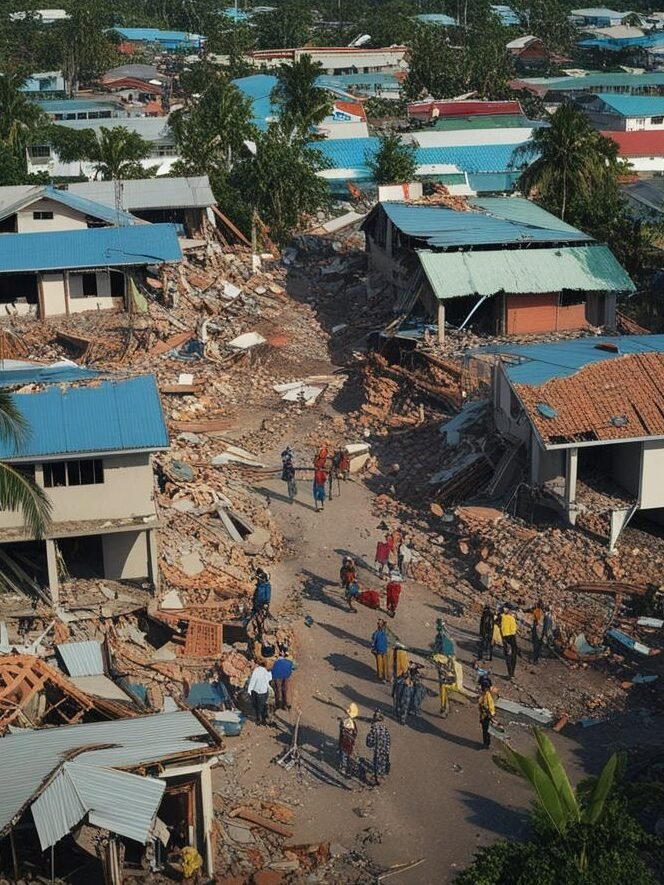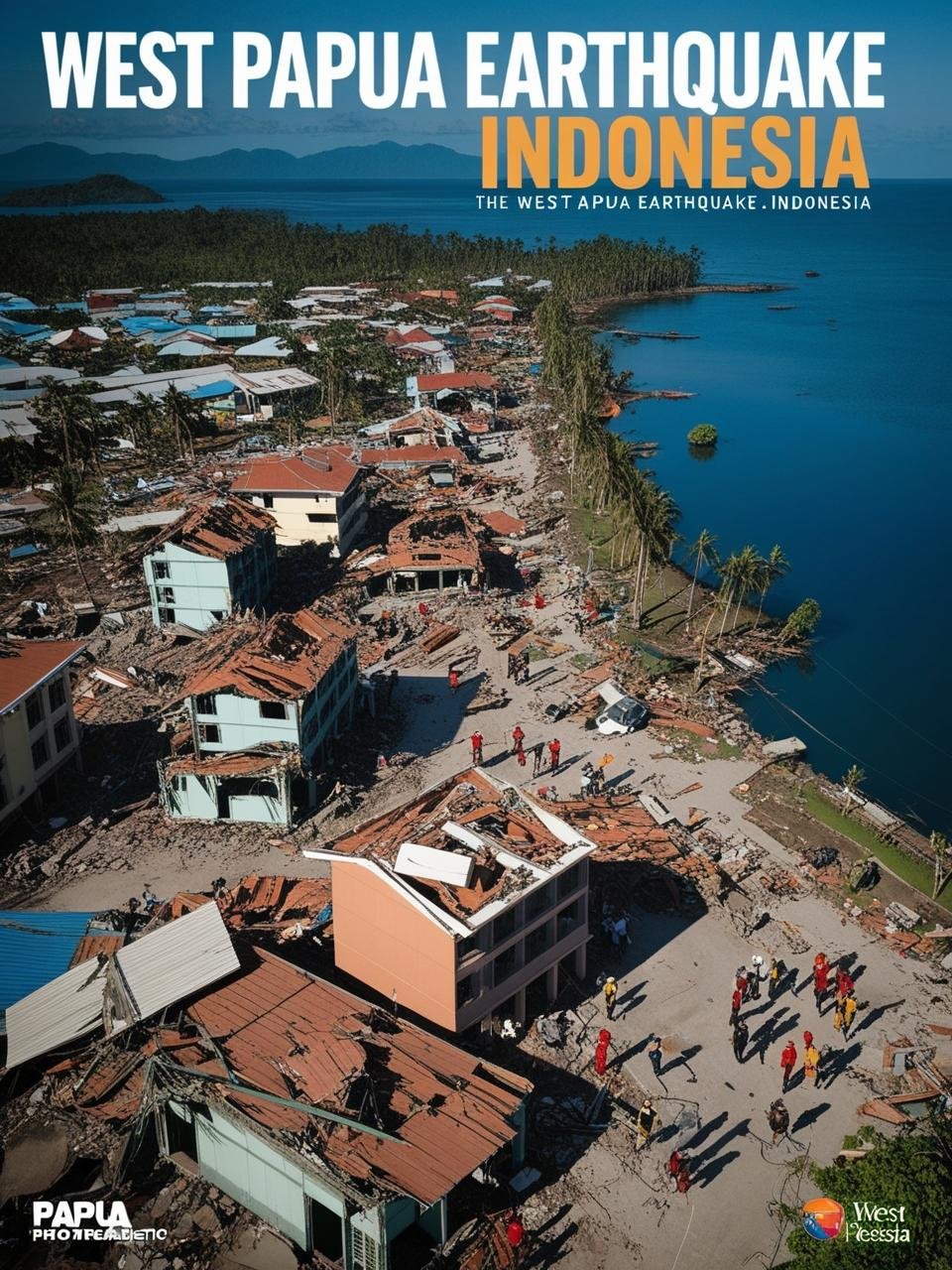Introduction
On April 10, 2025, a magnitude 5.9 earthquake struck the southern coast of West Papua, Indonesia. The earthquake, initially reported as a magnitude 6.0 by the German Research Center for Geosciences (GFZ), occurred at a shallow depth of 10 kilometers, amplifying its impact across the region. While no immediate casualties or significant structural damage were reported, this event serves as a reminder of Indonesia’s vulnerability to seismic activity due to its location on the Pacific Ring of Fire.
This comprehensive guide explores every aspect of the West Papua Earthquake of 2025, including its geological context, immediate impacts, disaster preparedness strategies, and actionable recommendations for building resilience. Designed to address user search intent for the keyword “West Papua Earthquake of 2025,” this article provides factual insights, comparisons, practical tips, and FAQs.
Geological Context: Why West Papua is Vulnerable
Indonesia’s Position on the Pacific Ring of Fire
Indonesia lies along the Pacific Ring of Fire, a 40,000-kilometer horseshoe-shaped zone known for intense tectonic activity. This region accounts for 90% of the world’s earthquakes and is home to over 75% of active volcanoes.

Key Geological Features
- Papuan Fold and Thrust Belt: The earthquake originated in this zone, where compressive forces from tectonic plate collisions generate frequent seismic activity.
- Tectonic Plates: The Australian Plate subducts beneath the Pacific Plate near Papua, creating significant geological stress.
- Shallow Depth: The quake’s depth of 10 kilometers intensified surface-level shaking.
Historical Earthquakes in Indonesia
Indonesia has experienced numerous catastrophic earthquakes over the years. Below is a comparison of major seismic events:
| Event | Magnitude | Year | Depth (km) | Casualties | Economic Impact |
|---|---|---|---|---|---|
| 2004 Indian Ocean | 9.1 | 2004 | 30 | 230,000+ | $15 billion |
| 2018 Palu | 7.5 | 2018 | 20 | 4,400+ | $1.3 billion |
| 2022 Cianjur | 5.6 | 2022 | 10 | 335 | $100 million |
| 2025 West Papua | 5.9 | 2025 | 10 | 0 | Minimal |
Immediate Impacts of the West Papua Earthquake
Key Details
- Date and Time: April 10, 2025, at approximately 14:53 local time.
- Epicenter: Located about 105 kilometers southeast of Asmat Regency in South Papua Province.
- Magnitude: Initially reported as magnitude 6.0 but revised to 5.9 by GFZ.
- Depth: Shallow depth amplified ground shaking intensity.
Regional Vulnerabilities
West Papua faces unique challenges in responding effectively to earthquakes:
- Limited Infrastructure: Only about 23% of roads are paved, making aid delivery difficult.
- Geographical Isolation: Many villages are located in hard-to-reach regions with minimal access to emergency services.
- Economic Constraints: Budget cuts in early warning systems have weakened disaster preparedness.
Disaster Preparedness in Indonesia
Current Systems
Indonesia has made strides in improving its disaster management framework:
- BMKG (Meteorology and Geophysics Agency): Operates seismic monitoring stations across the country.
- Tsunami Early Warning Systems (TEWS): Installed along coastal areas after the devastating 2004 tsunami.
- National Disaster Mitigation Agency (BNPB): Coordinates response efforts during emergencies.
Challenges
Despite these advancements:
- Remote areas like West Papua remain underserved by early warning systems.
- Public awareness about earthquake safety protocols is limited.
- Building codes are often not enforced in rural regions.
Global Comparisons: Lessons from Other Countries
Countries like Japan and the United States offer valuable lessons in disaster preparedness:
| Country | Preparedness Strategy | Outcome |
|---|---|---|
| Japan | Strict building codes; early warning systems | Minimized casualties during major quakes like Tohoku (2011). |
| United States | ShakeAlert® early warning system | Provides alerts up to one minute before shaking begins. |
| Haiti | Poor governance and infrastructure | High death toll during the 2010 earthquake (300,000+ deaths). |
Japan’s focus on resilient infrastructure and public education campaigns offers a model for Indonesia to emulate.
Actionable Tips for Earthquake Preparedness
Before an Earthquake
- Secure heavy furniture and appliances to walls.
- Identify safe spots in your home (e.g., under sturdy tables).
- Prepare an emergency kit with essentials:
- Water (1 gallon per person per day for three days).
- Non-perishable food.
- Flashlights and extra batteries.
- First-aid supplies.
During an Earthquake
- Follow the “Drop, Cover, Hold On” protocol:
- Drop to your hands and knees.
- Cover your head and neck under sturdy furniture.
- Hold on until shaking stops.
- Stay indoors if already inside; avoid doorways and windows.
- If outdoors, move away from buildings, trees, and utility wires.
After an Earthquake
- Check yourself and others for injuries.
- Inspect your home for structural damage before re-entering.
- Monitor local news for updates on aftershocks or evacuation orders.

The Role of Indigenous Knowledge in Disaster Resilience
Indigenous communities in Indonesia possess valuable knowledge that can complement modern disaster management strategies:
- In Simeulue Island, oral traditions like “Smong” teach tsunami awareness through storytelling.
- Traditional stilt houses in West Papua are adapted for flood-prone areas but could be retrofitted for seismic resilience.
Integrating indigenous practices into national disaster policies can enhance community preparedness.
FAQs About the West Papua Earthquake
Q: Was there a tsunami after the earthquake?
A: No tsunami was reported because the earthquake had a strike-slip mechanism that did not displace the seafloor vertically.
Q: How does this earthquake compare to others in Indonesia?
A: The West Papua earthquake was less severe than disasters like the Palu earthquake (2018) but highlights ongoing vulnerabilities in remote regions.
Q: What should travelers do during an earthquake?
A: Follow local safety protocols, stay informed via official channels, and prepare an emergency kit with essentials like passports and medications.
Policy Recommendations for Future Resilience
To address challenges effectively, Indonesia must prioritize:
- Strengthening Early Warning Systems:
- Expand BMKG’s network to cover remote areas like West Papua.
- Integrate AI-powered prediction models to improve accuracy.
- Enforcing Building Codes:
- Mandate earthquake-resistant construction for new buildings.
- Retrofit existing structures using affordable techniques like cross-bracing.
- Enhancing Community Education:
- Conduct regular drills in schools and workplaces.
- Include indigenous knowledge in disaster preparedness curricula.
- Investing in Infrastructure Development:
- Improve road networks to facilitate faster relief efforts.
- Build multi-purpose evacuation centers equipped with basic amenities.
Conclusion
The West Papua Earthquake of April 2025 serves as both a wake-up call and an opportunity for improvement in disaster management systems across Indonesia. By combining modern technologies with indigenous wisdom, enforcing stricter building codes, and investing in early warning systems, Indonesia can build resilience against future seismic events.
Preparedness is not just about surviving—it’s about thriving despite challenges posed by nature’s unpredictability. Let this guide inspire individuals, communities, and policymakers to act decisively before another disaster strikes.
Discover more from Bangalore Vibe
Subscribe to get the latest posts sent to your email.

